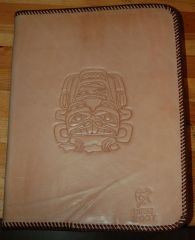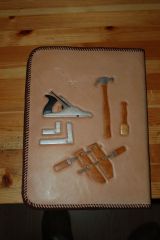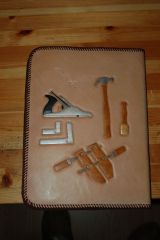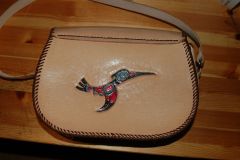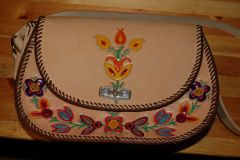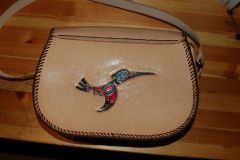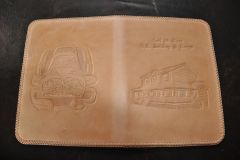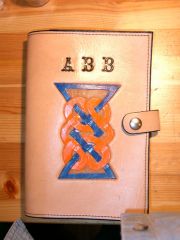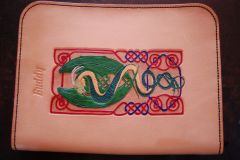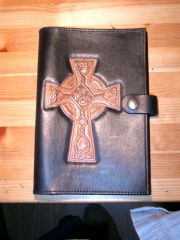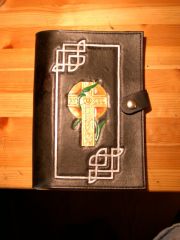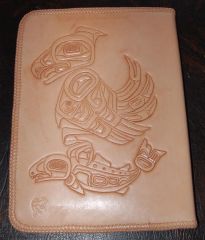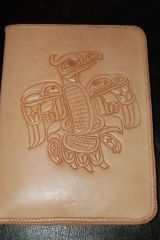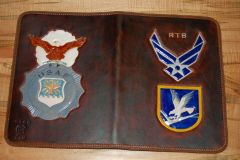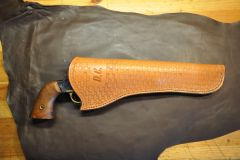-
Posts
607 -
Joined
-
Last visited
Content Type
Profiles
Forums
Events
Blogs
Gallery
Everything posted by BillB
-

Beaver Totem on Back of Wood Worker Bi-Fold
BillB posted a gallery image in Our Leatherwork Galleries
From the album: Projects by BillB
© © leatherworker.net
-
From the album: Projects by BillB
This Bi-Fold is for a friend of mine. He is a wood worker and he is left handed.© © leatherworker.net
-
From the album: Projects by BillB
This Bi-Fold is for a friend of mine. He is a wood worker and he is left handed.© © leatherworker.net
-
From the album: Projects by BillB
This is on the back of the Eastern Cree Bead pattern purse© © leatherworker.net
-
-
From the album: Projects by BillB
This purse design is based on an Eastern Cree bead work pattern© © leatherworker.net
-
From the album: Projects by BillB
© © leatherworker.net
-
From the album: Projects by BillB
© © leatherworker.net
-
From the album: Projects by BillB
© © leatherworker.net
-
From the album: Projects by BillB
© © leatherworker.net
-
From the album: Projects by BillB
© © leatherworker.net
-
From the album: Projects by BillB
© © leatherworker.net
-
From the album: Projects by BillB
© © leatherworker.net
-
From the album: Projects by BillB
© © leatherworker.net
-
From the album: Projects by BillB
Slim Jim Holster for 1875 Army Remmington Replica© © leatherworker.net
-
Amy, I do a lot of Native American Style designs on my work. Although I am not Native American, I grew up spending my summers in Minnesota and Canada in the 50's and 60's learning various Native American Crafts as well as Dance styles of the North Woods tribes. I have found that some of the old style bead patterns of the Woodland tribes translate well to leather. Since most of those patterns come from old black and white pictures, you have to take some liberty in coloring. I also have had good luck in translating the wood carvings and 2-Dimensional painting of the North West tribes. You can find some of my work in postings on this forum under my name "BillB". Here are some references that I use: Indian Crafts by Dr. Bernard Mason @ 1950 (No longer in print) Indian Dances by Dr. Bernard Mason @ 1950 (No longer in print) Learning By Doing - Northwest Cost Native Indian Art by Karin Clark and Jim Gilbert, Ravin Publishing Learning By Design - Pacific Northwest Coast Native Indian Art Volumes 1 & 2 by Jim Gilbert and Karin Clark, Ravin Publishing Looking at Totem Poles by Hilary Stewart, University of Washington Press. Looking at Indian Art of the Northwest Coast by Hilary Stewart, University of Washington Press Northwest Coast Indian Art an Analysis of Form by Bill Holm. University of Wshington Press Totem Poles of the Pacific Northwest Coast by Edward Malin, Timber Press Craft Manual of Northwest Indian Beading by George M. White, Beading in the Native American Tradition by David Dean, Interweave Press Ojibwa Crafts by Carrie A. Lyford, R.Schneider, Publishing My recommendation is that you study and understand the art form before you go too far. This is to be respectful of the ones who created and mastered this art form. In the carvings and paintings of the Pacific Northwest you will find that there are some basic rules practiced that are common across several variations of that form from the southern tribes to the northern tribes. This is no different than in painting by the european masters where there are various style. You have already received posting from Red Feather about representation of your work as Native American Style. Even without the law, this would be in respect of the Masters of this art form. No different than doing a painting in the style of Picaso (spelling?) or Rembrandt.
-
Mooshi, Correction to my last email - the needle sizes are 25 with 277 thread and 24 with 207 thread. These are the leather triangular needles. BillB
-
Mooshi, I have a Toro 3000. It works well on leathers up to 3/4" thick, though that is pushing it. I have used both 277 and 207 threads with Schmetz 25 and 25 needle sizes. I picked the 3000 style because: 1. It was a walking foot and needle system which would keep layers of leather aligned while sewing 2. With the removable work platform I could do both Bi-folds and Purses.; 3. The arm depth would handle all the sizes I needed. 4. It had the work platform I needed, e.g. heavy and stable, but also on wheels; 5. It had a servo motor with variable speed control Since then I have had no problems using the machine. I picked Artisan because at that time, in my opinion, it had the best customer interface over the phone and internet. Bill B
-
Mooshi, I am going to try and answer your question without telling you the Brand and Model of the machine I purchased. I am doing so because I do not believe that it is beneficial to do it in that fashion, what is more beneficial, in my opinion, is understand what the type of sewing I do and the features I was looking for in the machine I purchased. We all have our own reasons for picking the machine/company we did. Asking for the brand and model will not get you to the real reason we picked the one(s) we did. That being said, here is some background information. I do Leather craft as a hobby. I tend to be more towards the artist side rather than the production side. I do not own a business or am I under the constraints and pressures of running a business. This also means I don't get the benefits of being a business, e.g. some companies will not sell to me since I am not a business.0 I have done lacing for over 30 years, but do to problems with my wrists I wanted another method of joining the components together and hand stitching would have put the same stress on my wrists as does hand lacing. I had a modest amount of money available from a bonus from my real world work life. I do purses and 9" by 11" bifold for writing paper. I live on the east coast, so the primary interface with any company would be phone or web based It had to be simple enough and with enough documentation that I could maintain it. I wanted a machine that could sew 3/4" leather and multiple layers. I wanted on with speed variability I wanted a sewing surface that could handle both sewing inside of a purse as well as the flat bifold. I wanted one that was on a moveable platform since my work room has limited space (roll it out when needed) I did struggle with whether or not I needed a single needle or one capable of double needle stitching. I did go with the single needle to save on the seam width. I made my selection over three years ago. This is important because things do change over time (service people move on, companies change their price points and their target market). I can say that I am very happy with the machine I purchased, the help the company has provided when requested. I expect this machine to out live me and be passed on to one of my grand children. My recommendation to you is that you start a list of the features you want on a sewing machine and use that as your measuring stick when you look at and talk to the various vendors. BillB
-
jsroye96, Nice sheath. It is my experience from camping in Canada that there are two types of sheaths you can make: the style you did where it comes up the handle and snaps over the head; or the one that comes down from the top and snaps under the head. The first kind is best if it is to be carried on a belt. The second kind works well if it is carried in loops on the back pack. The one thing you should be careful of is making sure that the edge is unlikely to penetrate the sheath edge. Some folks prefer to put metal rivets alone the edge along with the stitching. while others will add either a wood gusset or thick leather gusset that the edge would it before getting to the stitching. Also the tighter and closer that part of the sheath is to the blade itself with restrict movement of the blade or head and restrict any penetration through the sheath. A loose fitting sheath will allow movement and the greater the movement the more velocity and thus force the head would have before striking the sheath edge. The other thing to consider is which side the customer plans to ware the sheath. This will determine which side of the blade you place the belt loop since you would want to have the blade pointing backwards. This protects the wearer during forward falls since the butt of the axe would hit rather than the blade. Things to consider when designing the next one. BillB
-
Dragan, Welcome to the forum. Nice work and I look forward to seeing more. I hope you are exploring the various sections in the forum and are finding the information useful. Please join in the discussions when you are ready. We all have our different points of view and the all add to the information and knowledge that is being shared here. Bill B.
-

moldy leather
BillB replied to jws999's topic in Dyes, Antiques, Stains, Glues, Waxes, Finishes and Conditioners.
jws999 Spray vinegar on the leather to kill the mold, then scrub with a soft cloth rag and rinse and rinse and rinse. Then store in a dry location. I have an old piece of leather as well and had to use this process to kill the mold. The leather will become stiff after it dries so it will take additional preparation prior to tooling and working. BillB -
Classair, Welcome to the forum. Yes there are lots of opinions out here. We have all come to this forum from different paths and different experiences and thus different opinions. The good thing about that is that there is usually more ways than one to "skin a cat" or "tool the leather". This allows us to find the solution that best fits our needs or at least gets close and then we make our own modifications and generate even more opinions. So Welcome, join and and provide us with some of your experiences in the wonderful world of Leathercraft or the art of beating a dead cow. 8-) BillB
-
Welcome to the forum. It will be interesting to here about the teachings of that old timer and what may have changed compared to todays methods. I look forward to seeing your website and some of your work. Again Welcome BillB
-

Bardge or Master
BillB replied to craftsman827's topic in Dyes, Antiques, Stains, Glues, Waxes, Finishes and Conditioners.
Neither I use plain old rubber cement. BillB.



